
views
- Before you’re ready to go on pointe, you must be at least 11 years of age and have completed 2-4 years of classical ballet training.
- To test if you're strong enough for pointe, execute 16 relevés in demi-pointe, perform a piqué passé with a straight leg, and stand on demi-pointe for 45 seconds.
- Your teacher will also check if you can point your toes without sickling and maintain proper turnout with regular ballet shoes.
How do I know if I’m ready for pointe?

You’re at least 11 years old. Although most ballet experts agree that students should be at least 11 or 12 years of age to start pointe work, readiness also depends on your foot and ankle strength, technique, and physique. Since the bones in your feet are still developing until your late teens, dancing en pointe too early can cause permanent damage to your feet, especially if you don’t have the proper strength to support all of your weight on your toes. Remember, it’s a reward to go onto pointe, and not everyone meets the prerequisites. Your dance instructor gets the final say when it comes to moving onto pointe, but if you think you’re ready, ask them for an evaluation so you can take the next steps.
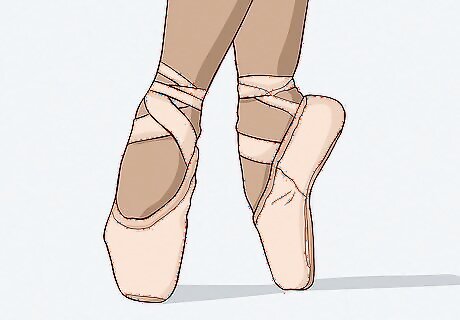
You have 2-4 years of ballet training, taking at least 2 classes per week. Complete at least 2 years of classical ballet training to build enough strength in your feet and master the fundamental techniques. For pointe preparation, this consists of 2-3 classes per week, or 3-5 hours of training per week, but some students may endure longer training (depending on their instructor or studio). While this training might seem rigorous, it’s essential to prepare for pointe work—dancing en pointe without adequate strength and technique increases your risk for injury.
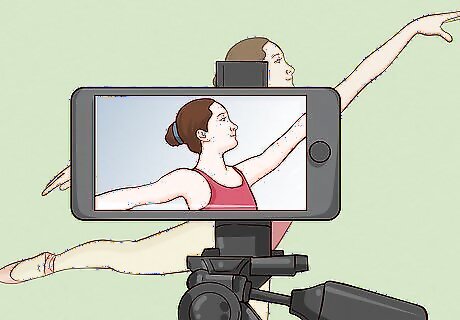
You have a strong, straight core and upright pelvis when dancing. Before moving onto pointe, it’s important to have a strong core so you can maintain your balance and execute all the steps. Hold the trunk of your body straight to keep your back muscles and lower abdominal muscles engaged, and ask your dance teacher to evaluate your posture. Alternatively, take a video recording of yourself while dancing to see if you are maintaining proper form. When placing all your weight on one leg, remember not to sink into your pelvis or hip bone.
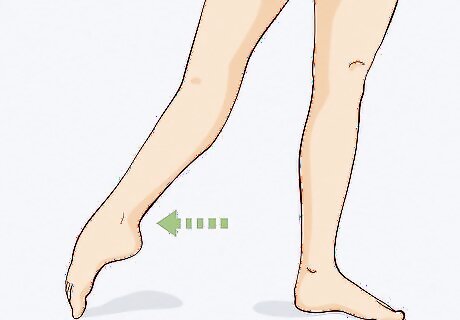
You can maintain correct turnout while dancing on flat foot or demi-pointe. When dancing, ensure that your foot stays in line with your kneecap and hip joint, and have the ball of your big toe act as the balancing point for your body weight. Turnout is an essential technique in ballet, and if you can’t maintain correct turnout normally, it’ll be even harder en pointe. To improve your turnout, lay on your stomach while resting on your elbows and arms. Move your feet together, and keep your knees pointing out to make a diamond shape. Holding this position, move your feet as close to your body as you can to stretch out your hips.
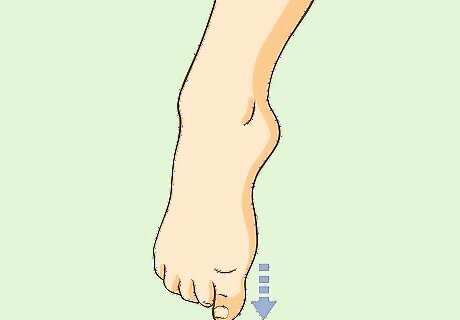
You can point your feet without sickling. When you sickle your feet, the toes of your foot curve inward and your heel drops back, instead of forming a clean line from the ankle to the toes. This position destabilizes your ankle, making you more susceptible to twists and sprains, so your instructor will double check that you maintain correct form with regular ballet slippers before moving onto pointe shoes. To prevent sickled feet, focus on keeping your knee, instep, and toe aligned when pointing.
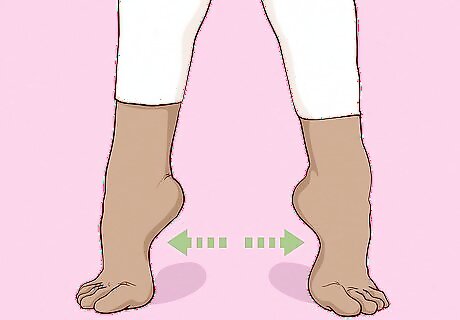
You can execute 16 relevés in demi-pointe. To test if you’re strong enough for pointe, try to perform 16 relevés in a row. Starting in any position you like, roll up onto the balls of your feet, holding your balance for a few seconds before lowering your heels. Repeat this movement 16 times, and be sure to maintain your turnout and keep your weight centered over your first 3 toes. Demi-pointe, also known as half-pointe, is when you balance on the balls of your foot rather than the toes of your foot. If you can’t perform 16 relevés in a row on demi-pointe, start small and increase your reps! Practice your ballet skills at home by using a table as a ballet bar, and use it to help support your upper body as you get started.
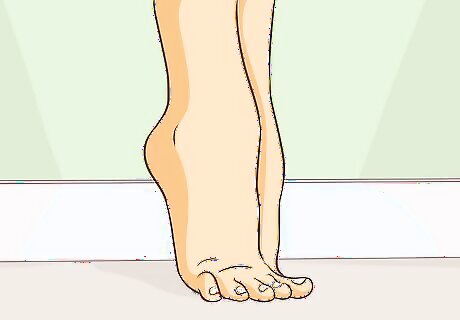
You can hold a passé balance on demi-pointe. This is a great exercise to see if you can maintain your balance with regular ballet slippers before moving onto pointe. Stand in first or fifth position, then raise one foot up to your knee, keeping that foot turned out to form a triangle shape. Then, push off the ball of the foot (that’s on the floor) to raise to demi-pointe. If you can hold this position without wobbling, it’s a positive sign that you have enough ankle strength to move onto pointe shoes.
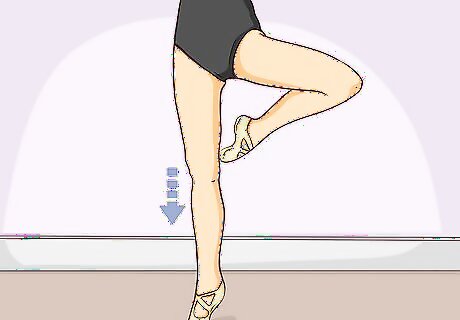
You can perform a piqué passé with a straight leg. To see if you have enough strength to push onto the box of pointe shoes, your instructor will probably ask you to perform several piqué passés in a row. Make sure to squeeze your abdominal muscles so you can lift yourself onto demi-pointe effortlessly, and keep your hips square, back straight, and legs turned out. This movement is much more difficult to do en pointe, and using a bent leg is considered a sign of weak ankles or improper step preparation.
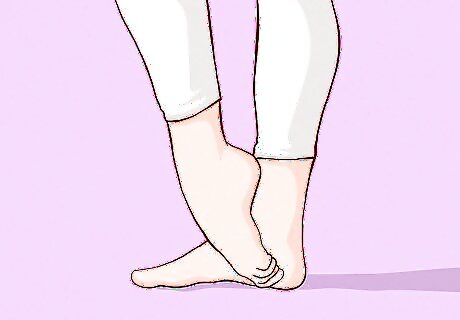
You can stand on demi-pointe for 45 seconds without wobbling. Holding a position in demi-pointe is a lot more difficult than dancing en pointe, making it the perfect exercise to gauge your feet and ankle strength. In fifth position, relax your toes, then slowly press onto the balls of your feet. Maintain your balance for 45 seconds, before rolling back down until your flat-footed. If you’re shaking or wobbling, hold the position for 20 or 30 seconds and work your way up time-wise. Or, practice dancing on demi-pointe to strengthen your muscle groups.
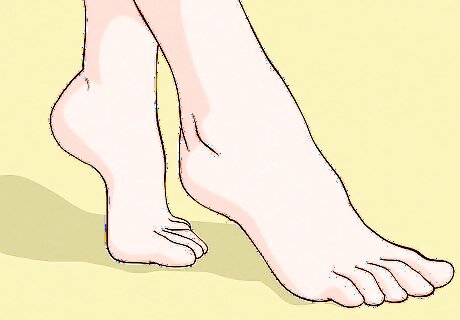
You’ve examined the bone structure of your foot. Unfortunately, some people will never be able to dance en pointe, no matter how hard they train, because the bone structure of their foot will result in injury. If you’re ready to dance on pointe, your feet will have the following characteristics: Your toes are around the same length, providing a “squared-off” platform for stability (the most difficult foot shape is one in which the second toe is longest). Your ankles are flexible. You have a high arch on the instep of your foot.
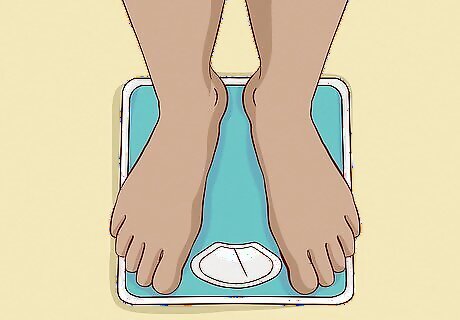
You are at a healthy weight. Because all of your body weight is distributed across your toes when you dance en pointe, instructors might hesitate to recommend you for pointe work if they worry your toes aren’t able to handle it. Before attempting to go on pointe, calculate your Body Mass Index (BMI) to make sure you fall within a healthy weight category.
Building Strength & Technique
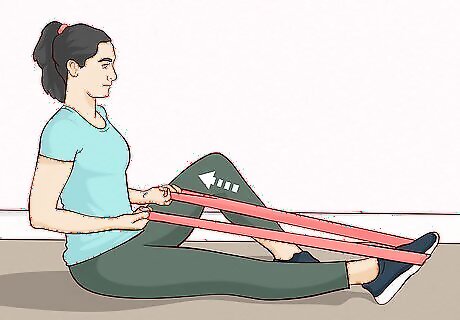
Use an elastic resistance band to build feet and ankle strength. Sitting on the floor with your back straight and legs extended in front of you, loop the band around the ball of your foot and pull it backwards to create tension. Point and flex your toes to increase the strength of your feet, using slow, controlled motions. Repeat this movement 10 times, and make sure you do not sickle your feet. A Theraband is a popular elastic band that ballerinas use to strengthen their muscles.
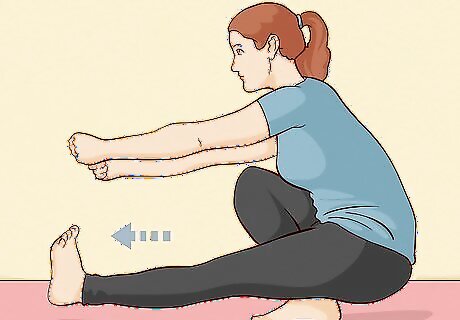
Perform one-legged squats to build ankle strength. Stand on one foot with one leg extended in front of you, then squat down as deep as possible. Keep your spine neutral and hips back, and make sure your knee is aligned with your toe. Start off with 10 squats, then adjust your reps as you get more comfortable. To help maintain your balance, keep your core engaged and rest your hands on your hips.
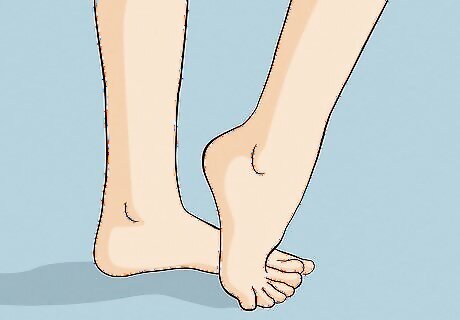
Practice metatarsal doming to strengthen your feet muscles. In a standing position, tighten your toes to provide a stable base for your foot. Pull your foot back, arching your instep as far as possible, and hold this position for a count of 6 seconds. Relax for 10 seconds, then perform ten reps of this exercise on each foot. Metatarsal doming exercises strengthen the small, intrinsic muscles in the foot that are very important for proper pointe technique.















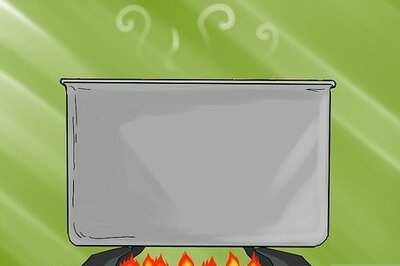

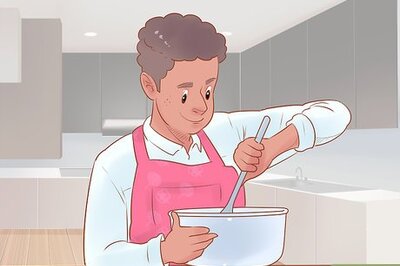


Comments
0 comment